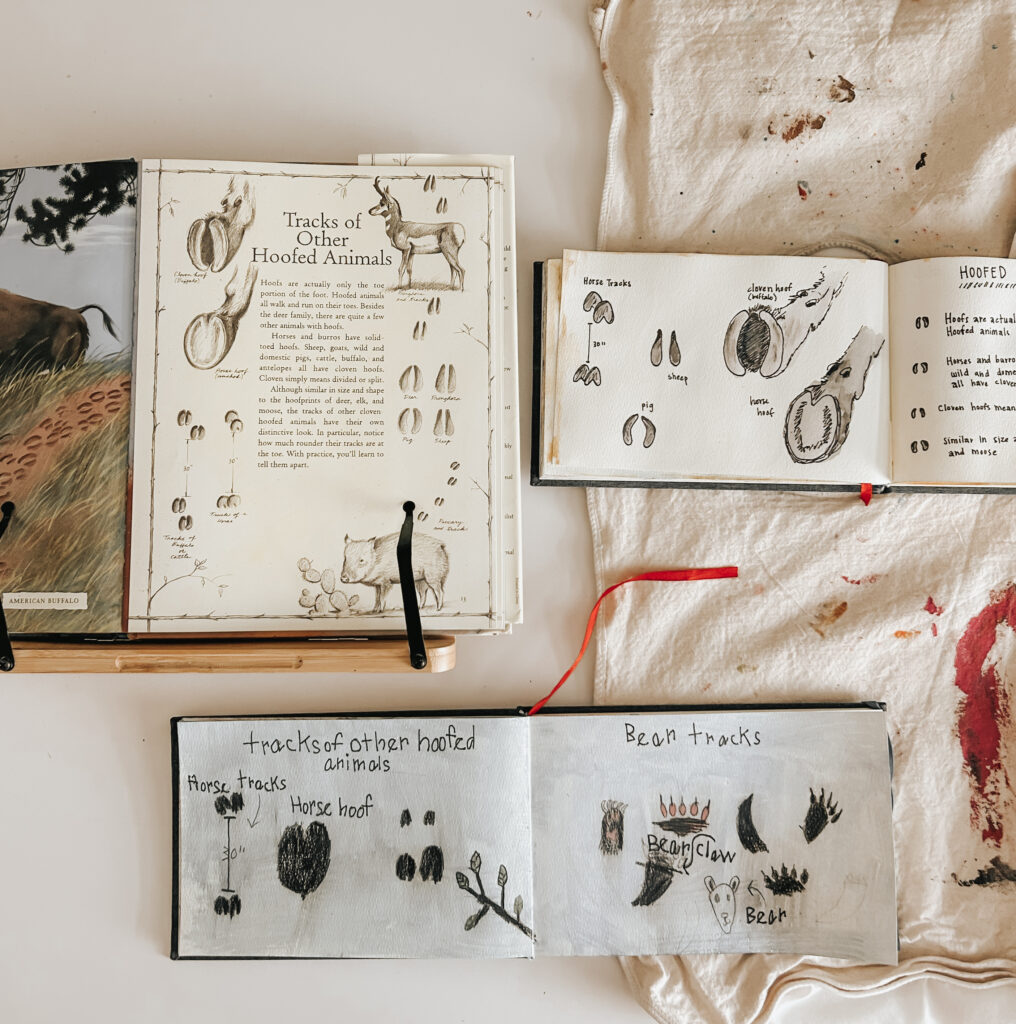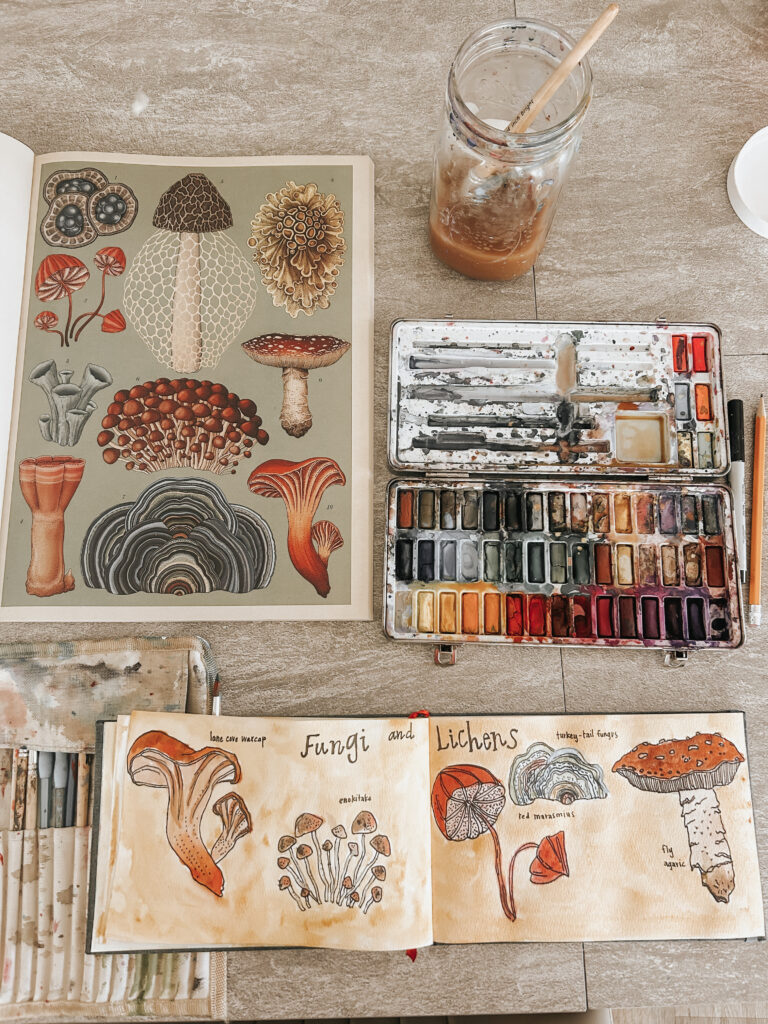
For our family, Spring and Summer plans look like tying up the loose ends of our Fall and Winter subjects, while also implementing new and fun plans for the warmer months. During the Autumn and Winter, we focused on these subjects. By the time Spring came along, we had already completed our Around the World studies, our Explode the Code, our history notebooking, and the majority of our Math. (all mentioned in the link above). Because these subjects felt “completed,” our schedule opened up to 1. resources that could help prepare my children for the following year’s workload, and 2. add some whimsy to our days. So here are a few things we’ve done in the Spring months, i.e March, April and May:
Grammar

Something I’ve been wanting to try for going on about a year now is Grammarland by E.Nesbit. I know, I know. Grammar doesn’t seem very whimsical or fun; but honestly, this book changed all of that for both me and my student. Grammarland is written as a storybook, set in a town called Grammarland. In the town of Grammarland, Judge Grammar is the head guy in charge. The story begins with a bit of chaos- it seems that everyone in Grammarland is “up in arms,” because no one can remember which words belong to which part of speech! That’s right- the parts of speech are actually characters. There is Dr.Verb, Little Article, Mr.Noun, Mr. Pronoun, Mr.Adjective and more. Because there is no much confusion around who owns which words, Judge Grammar pronounces a much-needed trial. Each part-of-speech gets to take the stand and plead their case about which words belong to him and why. Throughout this silly, but extremely well-written chapter book, your student (and you!) will effortlessly learn the parts of speech just by learning the characters! We read the first 8 chapters or so. We stopped at prepositions and conjuctions and all that, because I thought it might be a bit much for Lavender. We will most likely pick it up later in the year once she has solidified in her mind all the parts of speech she learned in the first eight chapters. I can’t recommend this book enough, even if you read through it slowly!
Historical Fiction Read Alouds

Because we are starting Early American History this Autumn with a strong emphasis on Native Americans and Africans, I wanted to read some light historical fiction that would create a backdrop for everything we would be studying. We read through the entire series of Kaya: American Girl within a couple months. The neat thing is that each book is only 4-5 chapters and can be read in about a week. The books are fully illustrated and so “alive” that you feel as though you’re living with Kaya and her family. It also gave us such a compassion for the religious beliefs of Native Americans. I will warn you that there are false beliefs and false gods spread throughout these books. You simply can’t study the culture of Native Americans without coming across their belief system. It is the crux of everything they do, think about and speak of. Though it was very clear to my daughter that these beliefs were false, reading about what they believe led to so many incredible discussions. Some chapters left my daughter saying, “Man- if they had only heard about Jesus, I’m sure they would’ve believed in Him.” That led us to talking about how Europeans attempted to introduce Christ to the Native Americans, but did so in a manner laced with threats, control and manipulation, enslavement and the list goes on. We talked about how wrong this was, and how perhaps we never would have received Christ had He been introduced to us in this way. We talked about how no matter what people believe, they are still image-bearers and worthy of respect and love.

Moving past the belief systems mentioned, the books are truly filled with high moral character and incredible life lessons. Character traits like selflessness, loyalty, hard work, unity, compassion, and honor are immersed within each chapter. Though Kaya believes differently, much of who she is trying to become aptly describes the life of a believer in Christ. As long as you’re ready to have discussions about belief systems with your student, I can’t recommend these books enough. If you’re looking to buy these, I suggest Thriftbooks. Because they are out of print, Amazon charges top dollar for them. You can usually get each one at around $5 each on Thriftbooks.
Spelling & Cursive
Although notebooking really hits on grammar, writing composition, sentence structure, and spelling, I could tell that my 2nd grader needed a little more practice. We picked up Splendid Spelling and Cursive Kickoff. Both have worked beautifully and take about 10 minutes each. Once you get the knack of how the lessons go, your student can totally do both of these independently.
Nature Study

I’ve found that, in the Autumn and Winter, we focus more on History and less on Nature Study. But come Spring and Summer, we long to spend our days romping through flower fields, trekking through shady hiking trails and knelt down watching bugs. This Spring, we picked up a curriculum that I have been itching to us: Wildcraft Study by Jodi Mockabee. We’ve been learning about fire starting, tying knots, animal tracks, hunting and fishing, edible plants, types of trees, and more. It’s really blending nature study and survival skills in such a beautiful, harmonius way. Lavender has already said that this has been her favorite curriculum we’ve done all year. The read-aloud that goes with the curriculum is My Side of the Mountain, which we are absolutely loving. It follows a young boy surviving in the wilderness of the Catskill Mountains. The book is just as informative as it is delightful. We have both been learning so much. To go along with the curriculum, we’ve been doing tons of nature journaling. Here are some photos of our most recent entries–



As soon as we finish up with The Wildcraft Study, I think we’re going to jump into Exploring Nature with Children. I’ll share more on that as we get going with it, but I’m super excited to say the least.
Holistic Nutrition

This has been a curriculum we’ve been working through slowly all year long. I cannot recommend it enough! Around this time last year, I started researching nutrition resources that aligned with our beliefs about health and wellness. This curriculum focuses on all things whole foods, raw milk, fermented foods, and high quality meats. It teaches about the importance of buying locally and knowing your farmers. It provides fun activities to get your students to try new vegetables, check ingredients labels, and create their own balanced meals! It has been fabulous! My 2nd grader now knows that each meal should ideally consist of a carb, a protein and a fat. She’s asking questions about where we are sourcing our foods, and she’s working to get her recommended amounts of water intake daily- all on her own I might add! If you decide to check out Growing Up Nourished, use my discount code “JADA15” to get 15% off!
Piano

We are still using Hoffman Academy for piano lessons, and Lavender is thriving. She does lessons around twice a week, and is currently planning her own piano recital. We will be inviting a few of her friends over for a tea party, where she will play about three songs. Although we are still using the Free Subscription, I think we will be upgrading to the Premium Subscription come Fall. Lavender is progressing quicker than we thought through the lessons and really the skill itself, so we think it’s time to invest.
Final Thoughts
As we continue in our homeschooling journey, I am growing more and more in love with schooling year around. I love the idea of focusing on nature study, nutrition and read alouds during the warm months, because most of our days are spent on a picnic blanket outside, in the woods or at a farmer’s market anyway. But during the cooler months, you’ll likely find us indoors notebooking, knocking out math lessons, having poetry tea times, and hitting the libraries, coffee shops and museums in our small town. I find myself constantly having to break off the public school mindset that has been so heavily engrained- the thought that certain months have to have “lessons” and certain months don’t. We’re finding our rhythm and I’ve truly never loved homeschooling more.
liked this post? leave a comment!